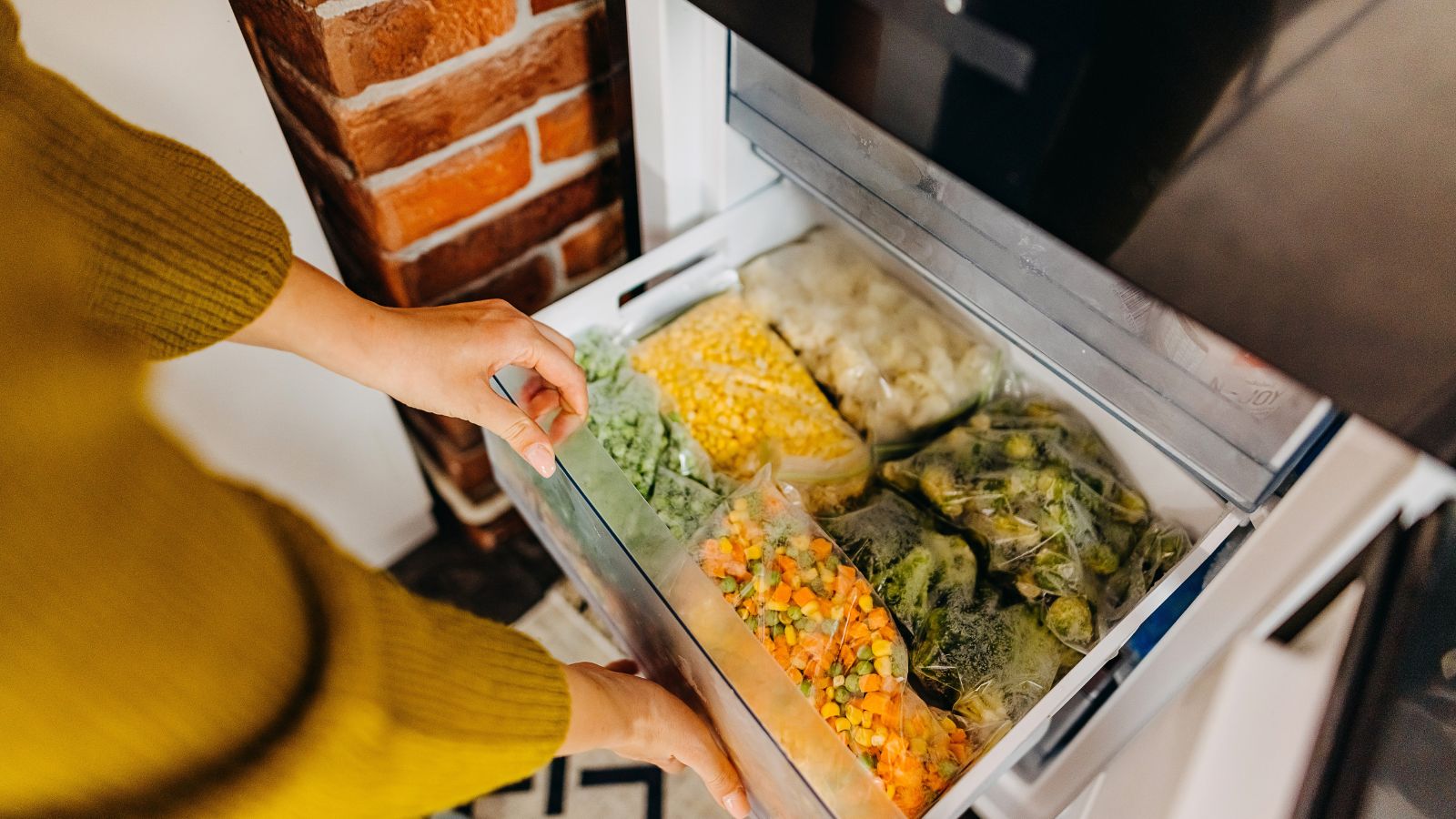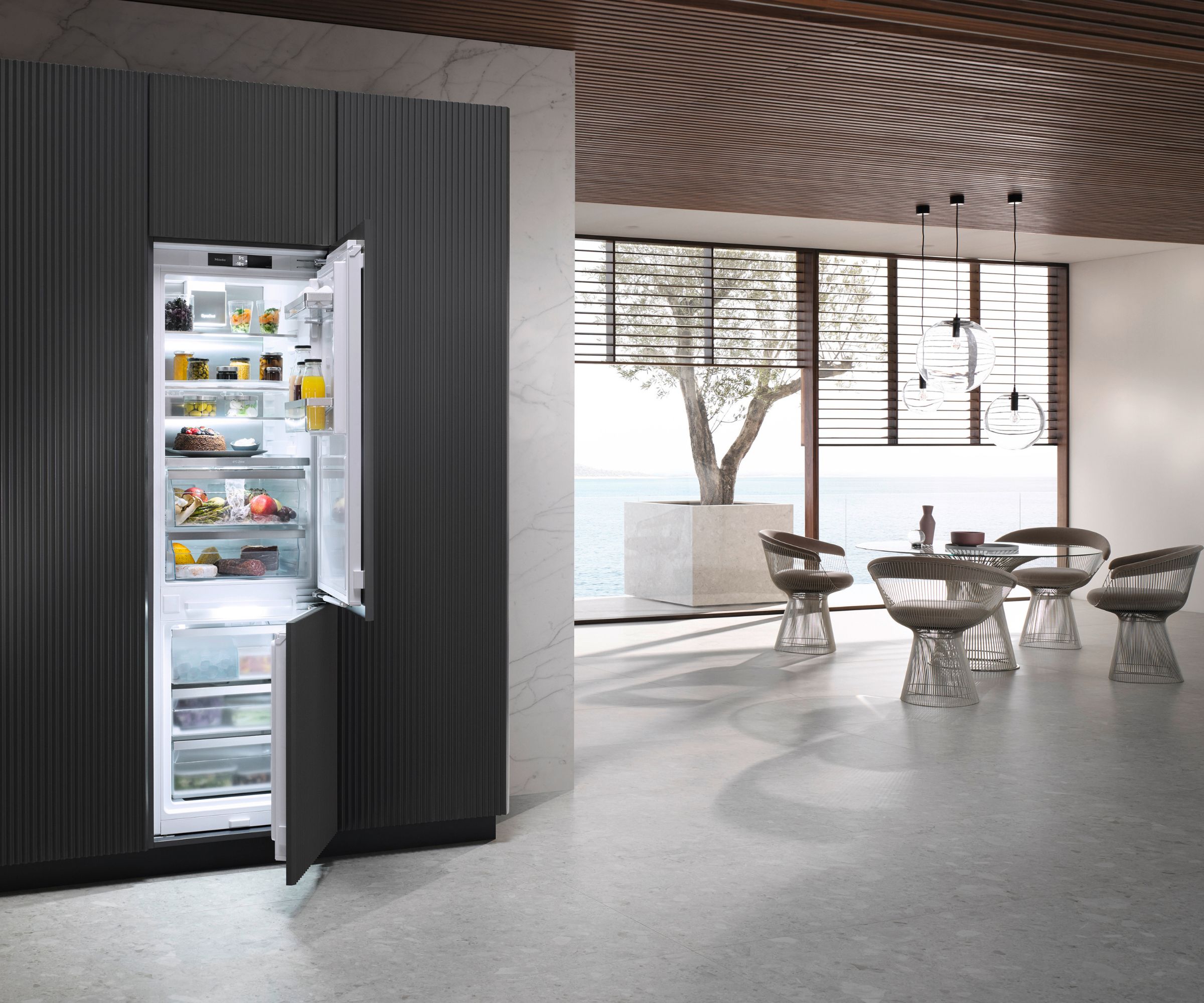
Too much frost in our freezers is a pain, making it more difficult to grab what's inside while depriving us of precious space inside. For a long time I've wondered why it happens and whether it's avoidable or not.
I caught up with mechanics and appliance experts to find out why freezers frost up, how to fix it and stop it returning.
Defrosting your freezer is a much needed step if you've decided to organize your freezer.
Why is my freezer frosting up?
Essentially, a lack of temperature regulation combined with an excess of moisture.
'Frost forms when warm, moist air comes into contact with the cold evaporator coils inside your freezer,' explains Andy Shu, appliance repair pro from ZapFixers. This can be caused by changes in temperature thanks to how we use, maintain and store items inside.
Read on to pin down what exactly the issue is with yours.
1. Temperature fluctuations

One of the most likely causes of a freezer frosting over comes from too many fluctuations in the temperature. A freezer needs a consistently regulated temperature of around 0°F (-18°C) for proper food safety and moisture control.
This can happen as a result of opening the door too often or leaving it open for too long. 'I’ve seen this more times than I can count,' shares Andy. 'Families that love to snack are constantly opening and closing the freezer door. Every time the door is opened, warm air rushes in, which then freezes and turns into frost.'
Ian Palmer-Smith, appliance repair expert at Domestic & General, elaborates says ice build up often happens when the freezer door is left open for longer than necessary. 'As a general rule,' he says, 'never keep the freezer door open for more than a couple of minutes as it doesn’t take long before the temperature change can take effect.'
But it isn't exclusively caused by us opening the doors, as review expert Arlo Harris adds, 'Many cheaper models lack precise temperature controls or efficient compressors, causing the unit to frequently cycle on and off. Look for a freezer with an Energy Star rating and digital controls for the best efficiency.'
If you're considering upgrading your freezer (or fridge/freezer), we've found that Lowe's and Home Depot have the biggest selections. Learn how to choose energy-efficient appliances.
2. Blocked airflow
In a similar vein, if the air vents are blocked and the temperature can't properly flow throughout the whole freezer, it can lead to over-frosting.
'Sometimes, in an effort to fit just one more item into the freezer, you might accidentally block the air vents. This disrupts the airflow and leads to frost accumulation,' Andy explains.
Make sure you're not over-filling the space. If you need to, you can always invest in extra space in the form a mini freezer. The Arctic King 1.1 Cu. ft. Upright Freezer from Walmart is an affordable choice that still offers a decent amount of space.
And as well as avoiding over-filling, make sure you never put hot or exposed food into your freezer. 'Another common culprit behind a frosty freezer is placing hot food into the appliance or storing food without sufficient covers,' Ian advises. 'This can introduce additional moisture into the air, causing a sudden shift in temperature, often resulting in frost build up.'
3. Loose seals
'One of the most common issues I’ve encountered in my years of fixing freezers is a worn-out door seal,' Andy explains. 'When the seal is damaged, it lets warm air sneak into the freezer, causing frost to build up.'
A tight seal ensures that the freezer's internal temperature is correctly regulated, and protects it from any external temperature changes.
Ryan Farley, appliance expert and CEO of LawnStarter, explains that it's the most common cause of over-frosting that he's come across. 'Over time, these seals do tend to kind of wear out, so you might notice more frost as your freezer gets up there in years,' he adds.
You can follow Arlo's steps to check whether your freezer's seal is still correctly intact. 'I recommend testing the seals regularly by closing the door on a $1 bill,' Arlo explains. If it slides out easily, it's time for replacement seals.'
Replacing the seals and gaskets of a freezer door isn't always the simplest task, so it might be one that's best left to a technician. In the mean time, keep your freezer's seal free of mold.

4. High humidity
There has to be an excess of moisture for freezers to be able to 'over' frost. It's the direct consequence of temperature fluctuations or a weak seal, as higher temperatures, humidity and hot or exposed food can bring more moisture into the space.
'When the freezer door is opened, warm, humid air rushes in. As it cools, the moisture condenses and freezes on the coils and walls,' explains construction and engineering expert Jimmy Hertilien. 'I always recommend keeping the freezer in an environment with consistent temperature and low humidity. An attic or garage are poor choices.'
You can delve into freezer storage hacks to avoid overpacking your appliance and allowing the cold air to properly circulate.
5. Malfunctioning defrost
'I've repaired many freezers where the defrost system failed. Whether it’s the defrost timer, heater, or thermostat, when these components stop working, frost starts piling up,' says Andy.
'I’ve also seen freezers set to extremely cold temperatures, which isn’t always better. This can cause excessive frost to build up over time.'
So, to keep your freezer free from frost, you'll need the temperature to remain consistent at around 0°F (as mentioned above). Learn about the items not to store in the freezer.
How to fix frost build-up in your freezer
To defrost a freezer, 'Unplug the freezer and let it fully defrost,' advises Jimmy. 'While defrosting, check the door seal and replace it if damaged. Once defrosted, wipe down the interior and restart while loading only a few items at a time, keeping the temperature around 0°F.'
Bear in mind any food that's in there will begin to defrost too so place your goods in a secondary freezer if you have one, or if not, learn how to defrost your freezer without switching it off.
Then, to prevent it from happening in the future, make a mental note of all the frost-causing factors mentioned above. Maintain a consistent temperature, avoid over-filling, never put hot food or unpackaged food into the freezer, and try not to open the door too often or for too long. Regular cleaning helps too, as well as defrosting it once or twice a year.
Once your freezer is frost-free and at the right temperature, it might be a good idea to learn how to organize your freezer correctly.







